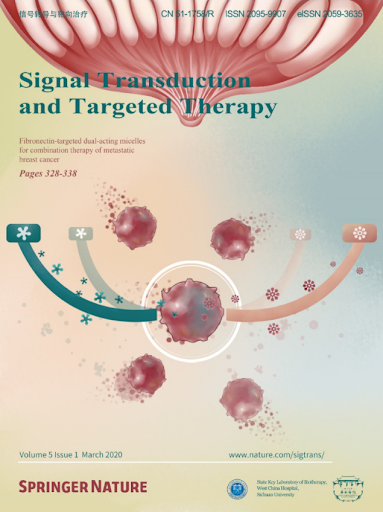Understanding the toxicity induced by radiation-triggered neuroinflammation and the on-demand design of targeted peptide nanodrugs.
IF 52.7
1区 医学
Q1 BIOCHEMISTRY & MOLECULAR BIOLOGY
引用次数: 0
Abstract
Radiation-induced brain injury (RIBI) represents a severe complication of cranial radiotherapy, substantially diminishing patients' quality of life. Unlike conventional brain injuries, RIBI evokes a unique chronic neuroinflammatory response that notably aggravates neurodegenerative processes. Despite significant progress in understanding the molecular mechanisms related to neuroinflammation, the specific and precise mechanisms that regulate neuroinflammation in RIBI and its associated toxicological effects remain largely unclear. Additionally, targeted neuroprotective strategies for RIBI are currently lacking. In this study, we systematically characterized the pathophysiology of RIBI using zebrafish (larvae/adults) and murine models. We established direct associations between neuronal damage and cognitive-behavioral deficits. Mechanistically, we proposed a ROS-mitochondrial-immune axis. Specifically, radiation-induced ROS lead to mitochondrial dysfunction, resulting in the leakage of mitochondrial DNA into the cytosol. This, in turn, activated the cGAS-STING pathway, thereby driving persistent microglia-mediated neuroinflammation. Furthermore, we engineered a dual-function nanotherapeutic agent, Pep-Cu5.4O@H151. This agent integrates ultrasmall copper-based nanozymes (Cu5.4O) for ROS scavenging and H151 (a STING inhibitor) and is conjugated with peptides that can penetrate the blood-brain barrier and target microglia. This nanoplatform exhibited excellent synergistic therapeutic efficacy by simultaneously neutralizing oxidative stress and blocking inflammatory cascades. Our research provided an in-depth analysis of radiation-induced neurotoxicity, clarifying the crucial ROS-mitochondrial-immune axis. Moreover, we have developed a precise therapeutic strategy on the basis of this mechanism.了解辐射引发的神经炎症引起的毒性和靶向肽纳米药物的按需设计。
辐射性脑损伤(RIBI)是颅脑放疗的严重并发症,严重降低患者的生活质量。与传统的脑损伤不同,RIBI引起独特的慢性神经炎症反应,明显加重神经退行性过程。尽管在了解与神经炎症相关的分子机制方面取得了重大进展,但在RIBI中调节神经炎症及其相关毒理学效应的具体和精确机制仍然很大程度上不清楚。此外,目前缺乏针对RIBI的靶向神经保护策略。在这项研究中,我们使用斑马鱼(幼虫/成年)和小鼠模型系统地表征了RIBI的病理生理。我们建立了神经元损伤和认知行为缺陷之间的直接联系。在机制上,我们提出了ros -线粒体-免疫轴。具体而言,辐射诱导的ROS导致线粒体功能障碍,导致线粒体DNA渗漏到细胞质中。这反过来又激活了cGAS-STING通路,从而驱动持续的小胶质细胞介导的神经炎症。此外,我们设计了一种双功能纳米治疗剂Pep-Cu5.4O@H151。该药物整合了用于清除ROS的超小铜基纳米酶(Cu5.4O)和H151(一种STING抑制剂),并结合了可以穿透血脑屏障并靶向小胶质细胞的肽。该纳米平台通过同时中和氧化应激和阻断炎症级联反应表现出优异的协同治疗效果。我们的研究提供了辐射诱导的神经毒性的深入分析,阐明了关键的ros -线粒体-免疫轴。此外,我们已经在这一机制的基础上开发了一种精确的治疗策略。
本文章由计算机程序翻译,如有差异,请以英文原文为准。
求助全文
约1分钟内获得全文
求助全文
来源期刊

Signal Transduction and Targeted Therapy
Biochemistry, Genetics and Molecular Biology-Genetics
CiteScore
44.50
自引率
1.50%
发文量
384
审稿时长
5 weeks
期刊介绍:
Signal Transduction and Targeted Therapy is an open access journal that focuses on timely publication of cutting-edge discoveries and advancements in basic science and clinical research related to signal transduction and targeted therapy.
Scope: The journal covers research on major human diseases, including, but not limited to:
Cancer,Cardiovascular diseases,Autoimmune diseases,Nervous system diseases.
 求助内容:
求助内容: 应助结果提醒方式:
应助结果提醒方式:


